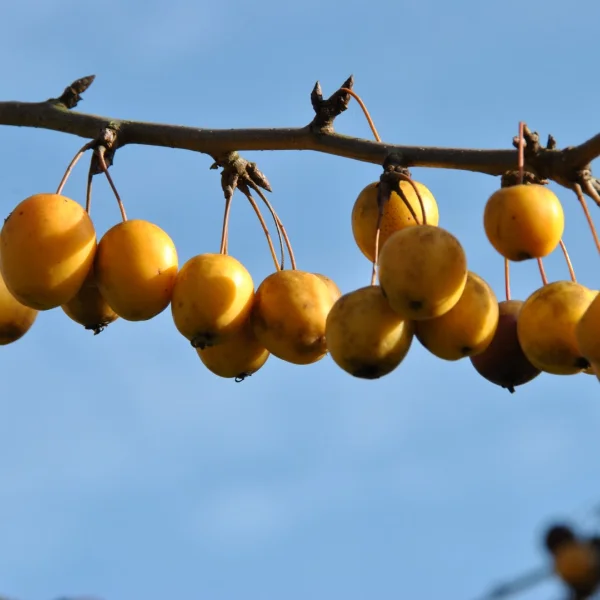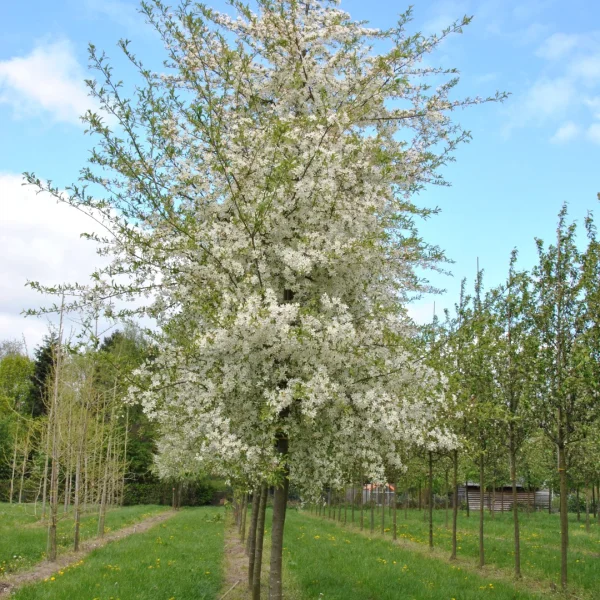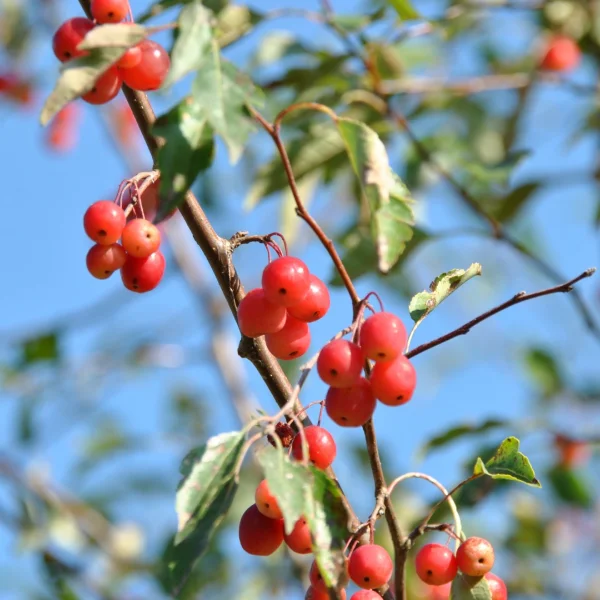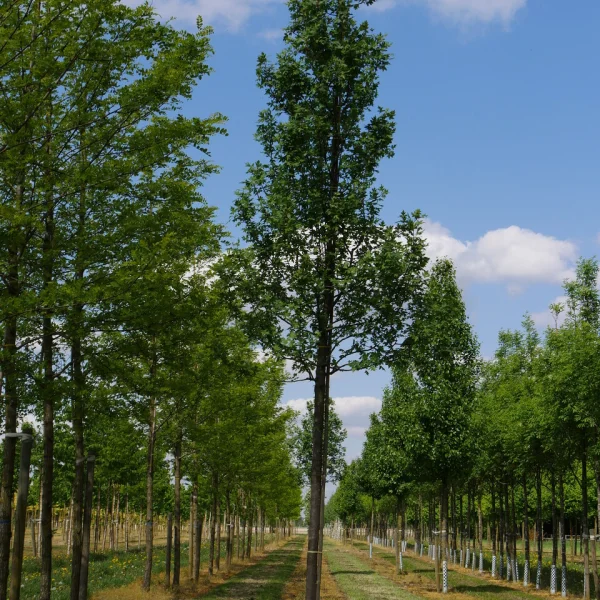Malus yunnanensis var. veitchii – Malus yunnanensis var. veitchii
Rosaceae
Malus yunnanensis var. veitchii – Malus yunnanensis var. veitchii
This product is currently not available.
You can submit your request via the contact form, we will inform you without obligation about the possibilities.
Specifications
Download PDF
Height
8-10 m
Width
8-10m
Crown
broad pyramidal, half-open crown
Bark and branches
brown
Leaf
green
Autumn colour
yellow, orange, purple
Flowers
cream white, flowers in May
Fruits
reddisch brown
Spines/thorns
None
Toxicity
usually not toxic to people, (large) pets and livestock
Soil type
clayed soil, loamy soil, sandy soil, acid soil, calcareous soil
Paving
tolerates partial paving
Winter hardiness zone
5a (-28,8 to -26,1 °C)
Wind resistance
good, susceptible to sea wind
Other resistances
resistant to frost (WH 1 - 6), can withstand wind
Fauna tree
aluable for bees (honey plant), provides food for birds
Application
avenues and broad streets
Shape
clearstem tree
Possibly of interest
Frequently asked questions
Malus yunnanensis var. veitchii
Malus yunnanensis var. veitchii can eventually reach a height of 8-10 m, depending on the site and climate conditions.
Malus yunnanensis var. veitchii has a average growing and can eventually reach a height of 8-10 m, depending on the site and climate conditions.
The leaves of Malus yunnanensis var. veitchii turn yellow, orange, purple in autumn.
The right time to plant Malus yunnanensis var. veitchii is during the dormancy period. In Western Europe, Malus yunnanensis var. veitchii with root balls can generally be planted from mid-November to late April, although this depends strongly on the climatic conditions and the species of tree.
may.
General
 English
English
 English (United Kingdom)
English (United Kingdom)
 Nederlands
Nederlands
 Nederlands (België)
Nederlands (België)
 Deutsch
Deutsch
 français
français
 čeština
čeština
 polski
polski
 español
español
 română
română
 dansk
dansk
 svenska
svenska
 magyar
magyar
 Türkçe
Türkçe
 slovenčina
slovenčina
 русский
русский
 norsk
norsk







